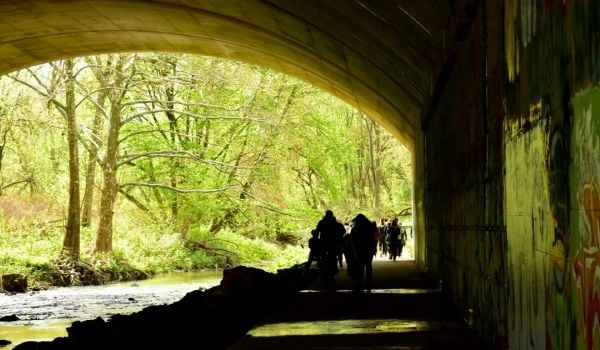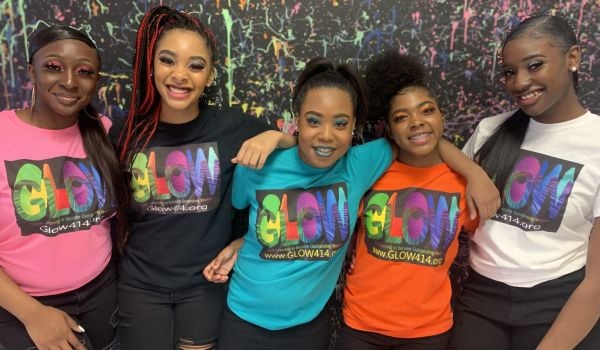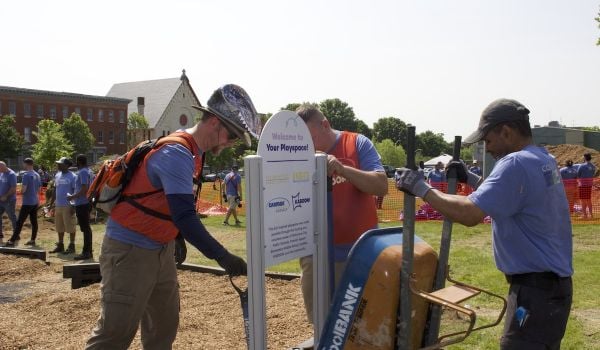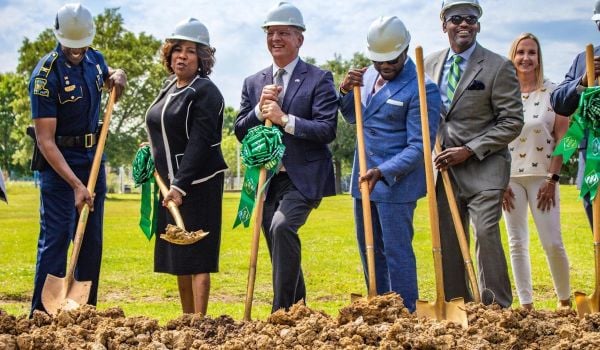Milwaukee County Executive David Crowley grew up on the north side of Milwaukee, a city a recent study described as “the archetype of modern-day metropolitan racial apartheid and inequality.” At least three times as a child, Crowley says, his family was evicted, upending the stability needed to concentrate in school and maintain social networks. In April, Crowley became the first African-American to win the county executive’s office. When he took office, asked each department to review its budget and hiring practices from a racial equity perspective. The parks department had already started.
Milwaukee has consistently ranked as one of the poorest and most segregated cities in the United States. Of the 50 largest metro areas in the country, Milwaukee has the lowest median income for Black households, for example. In May last year, the county declared racism to be a public health crisis. That declaration came two years after the county created an Office on African American Affairs specifically to address Milwaukee’s historic racial inequities.
“At Parks, we realized that if we just did it the way we had done it, we were just reinforcing the decisions made before,” said Jeremy Lucas, director of administration and planning for Milwaukee County Parks.
Lucas credits some of the parks department’s recognition of institutional racism to a 20-hour course that county employees took with the YWCA of Milwaukee on racism and implicit bias. The course helped him recognize, for example, the parks system’s “very significant amount of deferred maintenance” can’t just be handled “on the basis of oldest,” Lucas says. Allocating money to facilities based on their age would simply reinforce existing biases, he explains.
“How much wear and tear do you get? Is there a measurement? Do you have regular maintenance inspections? Does this look bad because it’s been vandalized or is it bad because there literally 100 kids on it every single day? Those are the new lessons we’re trying to learn, and we’re constantly trying to tweak just to account for the things we can with the resources that we have,” Lucas says.
The implicit bias course came together with efforts in the department to adopt a racial equity lens for prioritizing investment and an intense strategic planning process that involved all county departments. Milwaukee’s parks department reviewed the frameworks that Minneapolis and Pittsburgh used when determining where to invest in parks, looking for ideas it could borrow. “Pittsburgh has a community needs score and a parks needs score, and it goes into an investment priority score,” Lucas says. In addition to looking at the criteria that Pittsburgh and Minneapolis adopted, Lucas says Milwaukee added criteria of its own such as income, at-risk populations, demographic data, access to healthcare, and crime data. The team crunched these numbers to produce a countywide racial-equity-index score. He calls Milwaukee’s framework a “hybrid” of the ranking systems created elsewhere and the county’s own product, noting that not all types of data used elsewhere are available locally. Pittsburgh, for example, had data on the amount of particulate matter in the air and different neighborhoods’ tree canopy, information that Milwaukee doesn’t have available.
The ranking system is supplemented by a suggestion system that allows residents and local businesses to propose upgrades. The county has 157 parks in addition to its playgrounds, making up some 16,000 acres of land. Developing a system for monitoring equity over such a large area, Lucas acknowledges, can be overwhelming.
“Just picking the playgrounds and starting really was a great opportunity for us to get our arms around this and to recognize that it’s one step at a time and that it’s constantly changing and that it will need to be improved along the way,” he says.
For example, Lucas noted that in addition to racial equity, the department is also evaluating how accessible the parks are to people with disabilities and is working to ensure facilities comply with ADA requirements. For example, at Bradford Beach, the county partnered with a non-profit to build a ramp to create access for people who use wheelchairs. At a number of locations, including horticultural facilities, the department has set up audible directions for those who are visually impaired.
For Dan Schiller, the County’s equity efforts are “past due.” Schiller runs the Kellogg PEAK Initiative, which provides experience-based learning opportunities to young people. Schiller says “some of the loudest voices are the folks who are in spaces and places that get some of the most attention, and folks who are not heard are living in and around community assets and resources that are under-appreciated and under invested in.”
The way to change that dynamic, he says, is to ensure that the equity framework is to make sure it is a “long-game focus initiative that gets revisited and re-evaluated over time,” Schiller tells Next City.
The PEAK Initiative operates out of Tiefenthaler Park in downtown Milwaukee. Schiller says that until about five years ago, the park didn’t have a positive reputation. His organization asked the community what they wanted and decided to focus on the park because of its potential. Now, PEAK serves 550 youth who register for activities in the park. Additionally, 50 to 100 children who aren’t officially signed up participate because they are spending time in the park and want to get involved.
“Kids vote with their feet,” Schiller says.
“I would love to see the County intentionally build relationships with community partners who can activate these public spaces and engage residents in what they want to see in these spaces rather than telling them what will happen in these spaces,” Schiller says.
Catherine Nagel, head of the City Parks Alliance, agrees. Cities, she says, need to “to take time for extensive outreach and engagement with local communities to ensure the data aligns with the reality on the ground and that the process builds ownership of the results within the community.”
The data-driven approach that places like Minneapolis, Pittsburgh and Milwaukee are adopting reflects cities’ realization “that parks are part of their civic infrastructure,” Nagel says.
“Cities are using parks to help them meet an array of challenges…and to meet the needs of their residents that are most in need. To be able to take a multi-use perspective to how a city apportions its public dollars I think is revolutionary and much-needed,” Nagel tells Next City.
For the moment, Milwaukee’s experience suggests that cities adopting a racial equity framework for parks investment have models to build from, but those models have to be tweaked those to fit the available data and circumstances.
County Executive Crowley is optimistic about the tool. He noted that some of the suburban municipalities within the county are coming forward to ask for support implementing the framework. Still, he reiterates Schiller’s concerns about community engagement.
“As I push on particularly many of the suburban areas, and I’m glad that they want to have the conversation, it’s extremely important that you bring those people who you want to quote, unquote ‘change the system for’ to the table,” Crowley says.
This story is part of The Power of Parks, a series exploring how parks and recreation facilities and services can help cities achieve their goals in wellness, conservation and social equity. The Power of Parks is supported by a grant from the National Recreation and Park Association.

Zoe Sullivan is a multimedia journalist and visual artist with experience on the U.S. Gulf Coast, Argentina, Brazil, and Kenya. Her radio work has appeared on outlets such as BBC, Marketplace, Radio France International, Free Speech Radio News and DW. Her writing has appeared on outlets such as The Guardian, Al Jazeera America and The Crisis.
Follow Zoe .(JavaScript must be enabled to view this email address)
















